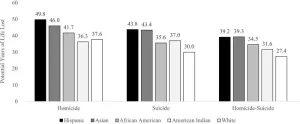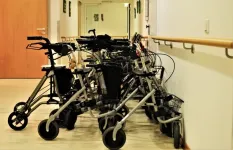(Press-News.org) Generative artificial intelligence platforms, from ChatGPT to Midjourney, grabbed headlines in 2023. But GenAI can do more than create collaged images and help write emails — it can also design new drugs to treat disease.
Today, scientists use advanced technology to design new synthetic drug compounds with the right properties and characteristics, also known as “de novo drug design.” However, current methods can be labor-, time-, and cost-intensive.
Inspired by ChatGPT’s popularity and wondering if this approach could speed up the drug design process, scientists in the Schmid College of Science and Technology at Chapman University in Orange, California, decided to create their own genAI model, detailed in the new paper, “De Novo Drug Design using Transformer-based Machine Translation and Reinforcement Learning of Adaptive Monte-Carlo Tree Search,” to be published in the journal Pharmaceuticals. Dony Ang, Cyril Rakovski, and Hagop Atamian coded a model to learn a massive dataset of known chemicals, how they bind to target proteins, and the rules and syntax of chemical structure and properties writ large.
The end result can generate countless unique molecular structures that follow essential chemical and biological constraints and effectively bind to their targets — promising to vastly accelerate the process of identifying viable drug candidates for a wide range of diseases, at a fraction of the cost.
To create the breakthrough model, researchers integrated two cutting-edge AI techniques for the first time in the fields of bioinformatics and cheminformatics: the well-known “Encoder-Decoder Transformer architecture” and “Reinforcement Learning via Monte Carlo Tree Search” (RL-MCTS). The platform, fittingly named “drugAI,” allows users to input a target protein sequence (for instance, a protein typically involved in cancer progression). DrugAI, trained on data from the comprehensive public database BindingDB, can generate unique molecular structures from scratch, and then iteratively refine candidates, ensuring finalists exhibit strong binding affinities to respective drug targets — crucial for the efficacy of potential drugs. The model identifies 50-100 new molecules likely to inhibit these particular proteins.
“This approach allows us to generate a potential drug that has never been conceived of,” Dr. Atamian said. “It’s been tested and validated. Now, we’re seeing magnificent results.”
Researchers assessed the molecules drugAI generated along several criteria, and found drugAI’s results were of similar quality to those from two other common methods, and in some cases, better. They found that drugAI’s candidate drugs had a validity rate of 100% — meaning none of the drugs generated were present in the training set. DrugAI’s candidate drugs were also measured for drug-likeness, or the similarity of a compound’s properties to those of oral drugs, and candidate drugs were at least 42% and 75% higher than other models. Plus, all drugAI-generated molecules exhibited strong binding affinities to respective targets, comparable to those identified via traditional virtual screening approaches.
Ang, Rakovski and Atamian also wanted to see how drugAI’s results for a specific disease compared to existing known drugs for that disease. In a different experiment, screening methods generated a list of natural products that inhibited COVID-19 proteins; drugAI generated a list of novel drugs targeting the same protein to compare their characteristics. They compared drug-likeness and binding affinity between the natural molecules and drugAI’s, and found similar measurements in both — but drugAI was able to identify these in a much quicker and less expensive way.
Plus, the scientists designed the algorithm to have a flexible structure that allows future researchers to add new functions. “That means you’re going to end up with more refined drug candidates with an even higher probability of ending up as a real drug,” said Dr. Atamian. “We’re excited for the possibilities moving forward.”
END
Chapman scientists code ChatGPT to design new medicine
The coded model may vastly accelerate the process of identifying viable drug candidates for a wide range of diseases, at a fraction of the cost
2024-02-07
ELSE PRESS RELEASES FROM THIS DATE:
Erectile dysfunction drugs may be linked to reduced risk of Alzheimer’s disease
2024-02-07
EMBARGOED FOR RELEASE UNTIL 4 P.M. ET, WEDNESDAY, FEBRUARY 7, 2024
MINNEAPOLIS – The drugs used to treat erectile dysfunction may also be associated with a reduced risk of Alzheimer’s disease, according to a study published in the February 7, 2024, online issue of Neurology®, the medical journal of the American Academy of Neurology. The study does not prove that erectile dysfunction drugs reduce the risk of Alzheimer’s disease. It only shows an association.
Erectile dysfunction drugs, which work by dilating blood vessels to allow more blood ...
Q&A: Helping robots identify objects in cluttered spaces
2024-02-07
Imagine a coffee cup sitting on a table. Now, imagine a book partially obscuring the cup. As humans, we still know what the coffee cup is even though we can't see all of it. But a robot might be confused.
Robots in warehouses and even around our houses struggle to identify and pick up objects if they are too close together, or if a space is cluttered. This is because robots lack what psychologists call "object unity," or our ability to identify things even when we can't see all of them.
Researchers at the University of Washington ...
Evaluation of ruxolitinib, a Janus Kinase inhibitor, in multiple myeloma
2024-02-07
“[...] the results of the studies presented in this review will hopefully provide the impetus for conducting additional preclinical and clinical studies to evaluate RUX in the setting of MM as well as other types of cancer.”
BUFFALO, NY- February 7, 2024 – A new research perspective was published in Oncotarget's Volume 15 on February 5, 2024, entitled, “Preclinical and clinical evaluation of the Janus Kinase inhibitor ruxolitinib in multiple myeloma.”
In this new paper, researchers Ashley Del Dosso, Elizabeth Tadevosyan, and James ...
Blood thinners added to clot-busting medication did not improve stroke outcomes
2024-02-07
Research Highlights:
Although giving blood thinners along with clot-busting medication may help in treating heart attacks, it did not improve 90-day outcomes in people with clot-caused strokes.
Enrollment in a large clinical trial, which had been planned to include more than 1,200 patients with ischemic stroke (clot-caused stroke), was halted after an independent data and safety monitoring board found no indication of benefit among the first 500 patients.
The data analysis for the 500 enrolled participants found giving blood thinners along with clot-busting medication did not increase the risk of bleeding into the brain.
Embargoed ...
Reinforcing the diverse ways people access seafood can ensure healthy communities in the face of change
2024-02-07
(Santa Barbara, Calif.) — As climate change affects the oceans, coastal communities, particularly those at the front lines of ocean warming and sea level rise, are facing pressures that could threaten their access to aquatic foods.
“Climate change and other economic shocks are impacting how people access seafood, and typically households that are most reliant on seafood, such as those in Pacific Island countries, are most at risk,” said Jacob Eurich, a research associate at UC Santa Barbara’s Marine Science Institute, and a fisheries scientist at the Environmental Defense Fund. Which is why, he added, it is necessary to increase food system resilience in the area, ...
Non-white victims of lethal violence and suicide in the US die significantly younger than their white counterparts
2024-02-07
In the US, people of color who are killed by violence or die by suicide lose more potential years of life than white victims, according to a new study, which also explored factors that may contribute to these disparities. Gregory Zimmerman of Northeastern University in Boston, US, and colleagues present these findings in the open-access journal PLOS ONE on February 7, 2024.
Mounting evidence suggests that, among victims of violence in the US, the average number of potential years of life lost—how much longer the victim would have lived if they survived—is greater for people of color than for white people.
To deepen understanding, Zimmerman ...
Almost 1 in 5 Indian adults aged 60+ show signs of mild neurocognitive disorder, according to nationally representative data - more than previously recognized
2024-02-07
Almost 1 in 5 Indian adults aged 60+ show signs of mild neurocognitive disorder, according to nationally representative data - more than previously recognized
###
Article URL: https://journals.plos.org/plosone/article?id=10.1371/journal.pone.0297220
Article Title: Prevalence of DSM-5 mild and major neurocognitive disorder in India: Results from the LASI-DAD
Author Countries: USA, UK, India
Funding: This work was supported by the National Institute on Aging (R01 AG051125 (JL), R01 AG030153 (JL), U01 AG064948 (JL), R01 AG070953 (ALG)). The funders had no role in study design, ...
More biodiverse nature landscapes may better buffer against stress - but only if you notice the difference, per experiment using videos of urban woodland
2024-02-07
More biodiverse nature landscapes may better buffer against stress - but only if you notice the difference, per experiment using videos of urban woodland
###
Article URL: https://journals.plos.org/plosone/article?id=10.1371/journal.pone.0297179
Article Title: Does increasing biodiversity in an urban woodland setting promote positive emotional responses in humans? A stress recovery experiment using 360-degree videos of an urban woodland
Author Countries: UK
Funding: SF received a PhD Studentship funding from the UKRI Economic and Social Research Council, ...
UK austerity politics correlated with increased frailty in the oldest adults
2024-02-07
The period of austerity politics from 2012 to 2018 was associated with steeper increases in frailty with age compared to pre-austerity between 2002 and 2010, according to a new study published February 7th in the open-access journal PLOS ONE by Carys Pugh of the University of Edinburgh, UK, and colleagues.
Previous research has linked a stalling in life expectancy growth to austerity politics implemented in response to the 2008-2009 financial crisis. However, the mechanism through which public spending cuts are associated with decreased life expectancy ...
Psychology study unearths ways to bolster global climate awareness and climate action
2024-02-07
An international team of scientists has created a tool that can aid in increasing climate awareness and climate action globally by highlighting messaging themes shown to be effective through experimental research.
The web-based tool, and the methods undergirding its creation, appears in the journal Science Advances.
The tool stems from a study involving nearly 250 researchers that drew more than 59,000 participants from 63 countries, including Algeria, China, Denmark, Germany, Israel, Japan, New Zealand, Peru, and the United States.
“We ...
LAST 30 PRESS RELEASES:
Why nail-biting, procrastination and other self-sabotaging behaviors are rooted in survival instincts
Regional variations in mechanical properties of porcine leptomeninges
Artificial empathy in therapy and healthcare: advancements in interpersonal interaction technologies
Why some brains switch gears more efficiently than others
UVA’s Jundong Li wins ICDM’S 2025 Tao Li Award for data mining, machine learning
UVA’s low-power, high-performance computer power player Mircea Stan earns National Academy of Inventors fellowship
Not playing by the rules: USU researcher explores filamentous algae dynamics in rivers
Do our body clocks influence our risk of dementia?
Anthropologists offer new evidence of bipedalism in long-debated fossil discovery
Safer receipt paper from wood
Dosage-sensitive genes suggest no whole-genome duplications in ancestral angiosperm
First ancient human herpesvirus genomes document their deep history with humans
Why Some Bacteria Survive Antibiotics and How to Stop Them - New study reveals that bacteria can survive antibiotic treatment through two fundamentally different “shutdown modes”
UCLA study links scar healing to dangerous placenta condition
CHANGE-seq-BE finds off-target changes in the genome from base editors
The Journal of Nuclear Medicine Ahead-of-Print Tip Sheet: January 2, 2026
Delayed or absent first dose of measles, mumps, and rubella vaccination
Trends in US preterm birth rates by household income and race and ethnicity
Study identifies potential biomarker linked to progression and brain inflammation in multiple sclerosis
Many mothers in Norway do not show up for postnatal check-ups
Researchers want to find out why quick clay is so unstable
Superradiant spins show teamwork at the quantum scale
Cleveland Clinic Research links tumor bacteria to immunotherapy resistance in head and neck cancer
First Editorial of 2026: Resisting AI slop
Joint ground- and space-based observations reveal Saturn-mass rogue planet
Inheritable genetic variant offers protection against blood cancer risk and progression
Pigs settled Pacific islands alongside early human voyagers
A Coral reef’s daily pulse reshapes microbes in surrounding waters
EAST Tokamak experiments exceed plasma density limit, offering new approach to fusion ignition
Groundbreaking discovery reveals Africa’s oldest cremation pyre and complex ritual practices
[Press-News.org] Chapman scientists code ChatGPT to design new medicineThe coded model may vastly accelerate the process of identifying viable drug candidates for a wide range of diseases, at a fraction of the cost






